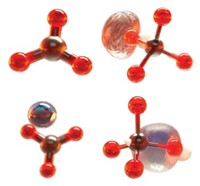Advertisement
Grab your lab coat. Let's get started
Welcome!
Welcome!
Create an account below to get 6 C&EN articles per month, receive newsletters and more - all free.
It seems this is your first time logging in online. Please enter the following information to continue.
As an ACS member you automatically get access to this site. All we need is few more details to create your reading experience.
Not you? Sign in with a different account.
Not you? Sign in with a different account.
ERROR 1
ERROR 1
ERROR 2
ERROR 2
ERROR 2
ERROR 2
ERROR 2
Password and Confirm password must match.
If you have an ACS member number, please enter it here so we can link this account to your membership. (optional)
ERROR 2
ACS values your privacy. By submitting your information, you are gaining access to C&EN and subscribing to our weekly newsletter. We use the information you provide to make your reading experience better, and we will never sell your data to third party members.
Materials
Cluster Formation Is Key To Carbonate Crystallization
A new theory suggests that CaCO3 crystals start to form by aggregation of stable clusters of about 70 Ca2+ and CO32- ions
by Jyllian Kemsley
December 22, 2008
| A version of this story appeared in
Volume 86, Issue 51
From coral reefs to scale on bathroom shower doors, calcium carbonate crystals are ubiquitous. Yet the early stages of CaCO3 crystallization are still poorly understood. A research group led by Helmut Cölfen of the Max Planck Institute of Colloids & Interfaces, in Potsdam, Germany, has now observed pH-dependent formation of thermodynamically stable clusters of about 70 Ca2+ and CO32- ions that the scientists believe are key to crystal formation (Science 2008, 322, 1819). The researchers propose that these clusters aggregate into amorphous CaCO3, which then forms into crystalline material, such as calcite. This suggested pathway is in contrast to the classical view of crystallization, which holds that metastable clusters form randomly, then incorporate single ions to nucleate into amorphous and then crystalline forms. Cölfen and coworkers also observed the stable cluster formation pattern for calcium phosphate and calcium oxalate, suggesting that the proposed mechanism may apply to a range of minerals.





Join the conversation
Contact the reporter
Submit a Letter to the Editor for publication
Engage with us on Twitter